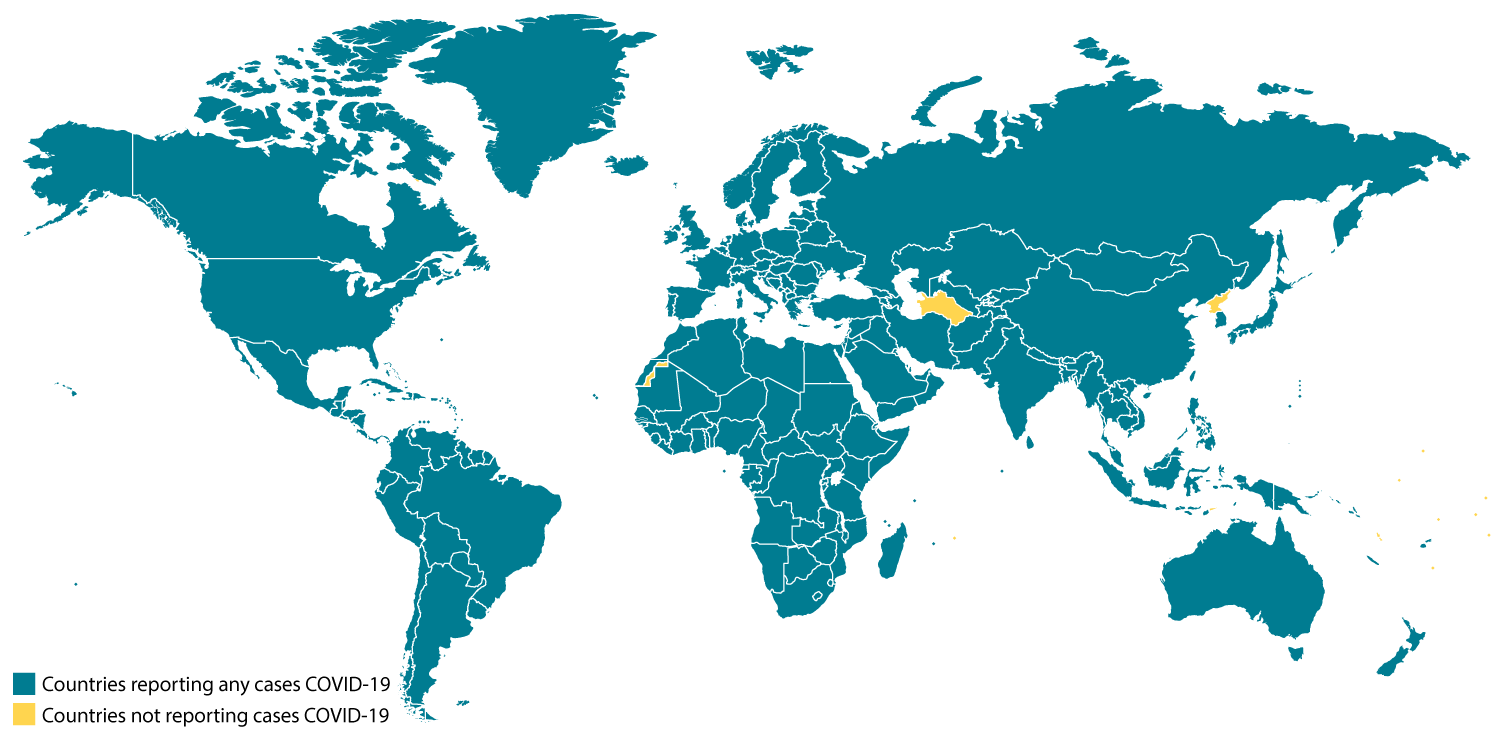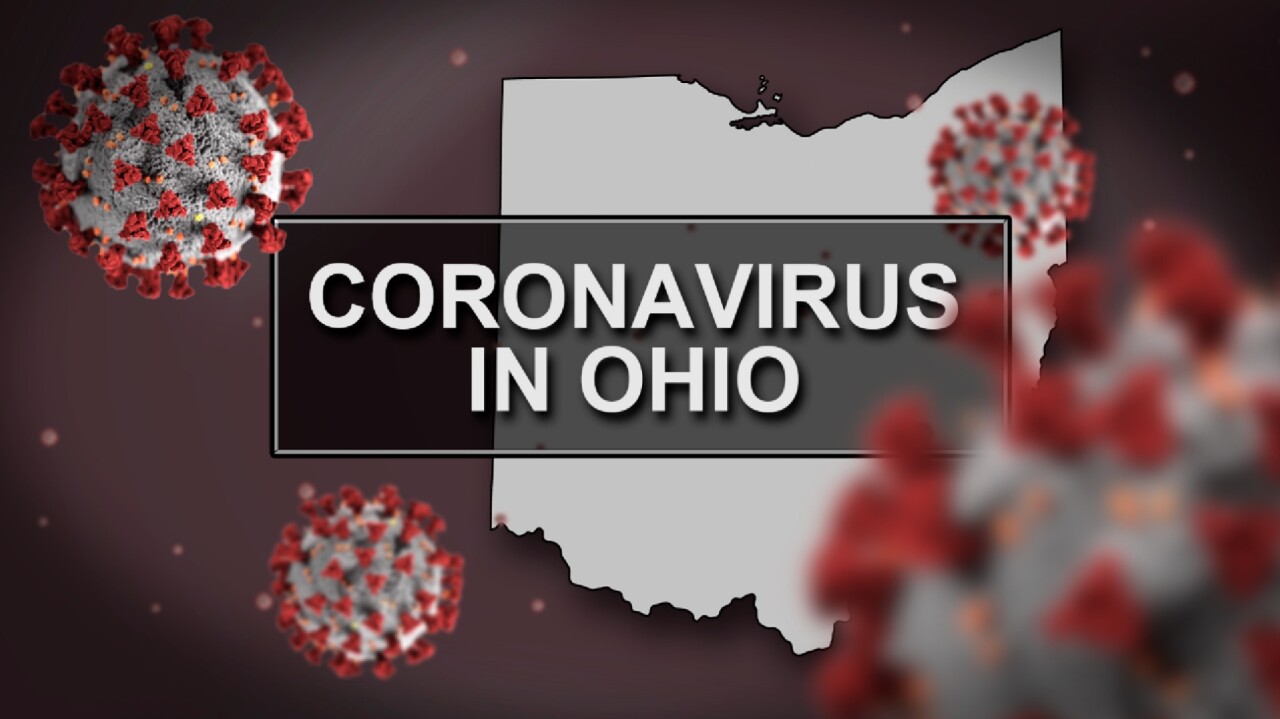CLEVELAND — As the coronavirus COVID-19 crisis spreads across Ohio, so do the rumors. Here is a guide of some of the most widespread rumors surrounding COVID-19 in Ohio and the truth behind them:
Do I need to go to the grocery store and stock up?
No, you do not need to rush in and clear the shelves, the stores will remain open. In fact, rushing to the store and hoarding goods is exactly what you shouldn’t do.
President Donald Trump said Monday that his administration was advising discretionary shopping trips be avoided and in a press conference the day before said “You don't have to buy so much. Take it easy. Just relax.”
Ohio Gov. Mike DeWine and his team confirmed that—despite the closures of schools, bars, dine-in restaurants, gyms, movie theaters, recreation centers, and other public facilities—grocery stores will remain open in Ohio. There is no need to rush all at once to the store.
“You’re going to have access to the essentials of life,” Lt. Gov. Jon Husted said.
Is the National Guard going to be deployed to keep us quarantined?
There are no plans to deploy the National Guard in Ohio in response to the coronavirus crisis, but should they be needed DeWine said they are prepared.
“The National Guard is always available,” DeWine said Monday. “When it’s time— if it’s time—for the National Guard to be involved in anything, any kind of emergency, then certainly they’re well prepared and they will do that.”
That does not mean assistance from the National Guard won’t happen. New York Gov. Andrew Cuomo deployed the National Guard to a New York City suburb in the hopes of containing the spread of the coronavirus.
Cuomo said the National Guard would set up a "containment area" for two weeks, from March 12 to March 25 and facilities and schools within the area would be closed off as cleaning and disinfecting are conducted.
Are young people immune to the disease?
No, young people can get the disease too. The youngest positive COVID-19 test in Ohio was a 14-year-old, according to Dr. Amy Acton, Director, Ohio Department of Health.
Like many illnesses, those at higher risk for serious symptoms are the elderly, individuals with compromised immune systems and those with serious chronic medical conditions, the CDC said.
For many young people, COVID-19 may present itself very mildly, with cold-like symptoms such as a fever, cough or runny nose, according to the CDC. That doesn’t mean that young people are immune to the disease and should still be cautious.
Will wearing a face mask prevent me from getting COVID-19?
Wearing a face mask if you are not sick will not do much to protect from respiratory diseases. Actually, face masks should really only be used by people who show symptoms of COVID-19 to help prevent the spread of the disease, the CDC said.
The mass hoarding of face masks by the healthy public takes the supplies away from those who need it to prevent the spread and for healthcare professionals who need the masks to properly treat and care for patients with all kinds of illnesses.
Those who do have a large supply of face masks, medical-grade gloves or other necessary equipment for those in the medical field can donate them to the the nearest Emergency Management Agency location, Dr. Acton said.
Is this a warm-weather virus?
The answer to this question hasn’t been determined yet.
Other viruses, colds and the flu, tend to spread more during cold weather months, but it is still possible to contract them during warm weather months and in warm climates, the CDC said.
At this time, the CDC does not know whether the spread of COVID-19 will decrease when the weather becomes warmer but research is underway.
Should I stock up on hand sanitizer?
While hand sanitizer is a great way to keep your hands free of germs in certain circumstances, hoarding Purell isn’t the way to go. Washing your hands is a much more effective way to keep your hands free and clear of transmittable illnesses, including COVID-19, according to the CDC.
You should wash your hands with soap and water for 20 seconds. If soap and water are not available and your hands are not visibly dirty, an alcohol-based hand sanitizer containing at least 60% alcohol is a good substitute at that moment, the CDC said.
Having cases of hand sanitizer hoarded in your garage isn’t really the best choice, a bottle or two should do the trick.
Additional Coronavirus information and resources:
Read our daily Coronavirus Live Blog for the latest updates and news on coronavirus.
Below you can find information and resources on novel coronavirus, COVID-19, from local, state, national and international organizations, including the Cuyahoga County Board of Health, the Ohio Department of Health, the Centers for Disease Control and Prevention, and the World Health Organization.
News 5 will continue to update this section with new information, resources, links, and more as it is made available.
COVID-19/2019 Novel Coronavirus Overview from the CDC:
What is coronavirus disease 2019 (COVID-19)? Coronavirus disease 2019 (COVID-19) is a respiratory illness that can spread from person to person. The virus that causes COVID-19 is a novel coronavirus that was first identified during an investigation into an outbreak in Wuhan, China.
Can people in the U.S. get COVID-19? Yes. COVID-19 is spreading from person to person in parts of the United States. Risk of infection with COVID-19 is higher for people who are close contacts of someone known to have COVID-19, for example healthcare workers, or household members. Other people at higher risk for infection are those who live in or have recently been in an area with ongoing spread of COVID-19. Learn more about places with ongoing spread here.
Have there been cases of COVID-19 in the U.S.? Yes. The first case of COVID-19 in the United States was reported on January 21, 2020. The current count of cases of COVID-19 in the United States is available on CDC’s webpage here.
How does COVID-19 spread? The virus that causes COVID-19 probably emerged from an animal source, but is now spreading from person to person. The virus is thought to spread mainly between people who are in close contact with one another (within about 6 feet) through respiratory droplets produced when an infected person coughs or sneezes. It also may be possible that a person can get COVID-19 by touching a surface or object that has the virus on it and then touching their own mouth, nose, or possibly their eyes, but this is not thought to be the main way the virus spreads. Learn what is known about the spread of newly emerged coronaviruses here.
Download and read the CDC's full "What you need to know about coronavirus disease (COVID-19)" information sheet here.

Global case numbers are reported by the World Health Organization (WHO) in their coronavirus disease 2019 (COVID-19) situation report.

Coronavirus in Ohio:
As of Monday, March 16, there were 50 confirmed cases of coronavirus in Ohio. Cuyahoga County remains the county with the highest number of cases in the state with 24. There are 6 in Butler, 2 in Belmont, 3 in Franklin, 1 in Geauga, 3 in Lorain, 1 in Lucas, 1 in Medina, 3 in Stark, 2 in Summit, 2 in Trumbull and 1 in Tuscarawas.
ODH Director Amy Acton revealed that their department believes that at least 100,000 Ohioans are currently carrying the disease, a claim that has made national headlines.
Governor's Orders
Since Wednesday, March 11, Governor Mike DeWine has issued the following orders:
-A limit on visits to nursing homes and an order to hold sporting events without spectators. Since that time, almost all professional, college and high school sporting events have cancelled, and DeWine issued an order restricting all visitors to nursing homes and assisted care facilities, with exemptions for end-of-life care.
-A prohibition on "mass gatherings" of over 100 people. Another order on March 16 reduced gathering size to 50 people, per the CDC's current guidance.
-An order to close all Ohio K-12 schools for three weeks beginning at the end of the school day on Monday, March 16.
-On March 13, DeWine announced several new steps the state is taking to prevent the spread of coronavirus and provide relief to Ohio's residents, including an order stopping visitations at county jails, providing free breakfasts and lunches to Ohio's K-12 students, and a request to the Trump administration for regulatory and other relief as necessary.
-On March 15, DeWine ordered that all bars and restaurants in Ohio close, and serve customers through carry-out and delivery only.
-On March 16, DeWine announced his recommendation that the Primary Election on March 17 be postponed to June 2, and that mail-in absentee voting be extended. Secretary of State Frank LaRose supported the recommendation. A lawsuit was filed but rejected by Franklin County Judge Richard Frye. Mere hours before polls would have opened, Ohio Dept. of Health Director Amy Acton ordered the polls closed as a public health emergency.
Coronavirus' Impacts in Northeast Ohio:
Since the announcement of confirmed cases in Ohio, a number of local events, schools, facilities and more have announced closures, cancellations, postponements and changes as a result of coronavirus. News 5 is working to keep this information updated in the links below:
Here's a list of things in Northeast Ohio closed due to coronavirus concerns
Multiple Ohio colleges suspend in-person classes due to coronavirus concerns
The City of Cleveland has canceled its St. Patrick's Day Parade and the Cleveland International Film Festival, and issued a civil emergency in response to COVID-19.
More resources from News 5 and affiliates:
News 5's Coronavirus continuing coverage page
Symptoms
The symptoms of coronavirus are fever and lower respiratory tract issues, such as cough and shortness of breath, according to the Cuyahoga County Board of Health.

Travel
Anyone traveling internationally should review plans in advance of their trip, and check the CDC’s COVID-19 Travel Information Page for daily updates and travel alerts.
Click here for the CDC COVID-19 Travel Information Page
Practice Good Hygiene
The CCBH recommends the following good hygiene practices to prevent coronavirus, as well as the flu, colds and other illnesses:
Sneeze or cough into the bend of your elbow to keep germs from spreading
Regularly wash your hands with soap and water/use alcohol-based hand sanitizer in between
Don’t share cups, spoons, forks, etc. with anyone
Don’t make food for anyone if you are sick
Don’t go to work or school if you are sick
Visit a doctor, urgent care or emergency department if you are sick – don’t take chances
Please contact your medical provider with any questions.
Guidance for those with compromised immune systems
Click here for specific guidance from the CCBH for anyone at higher risk for becoming ill.
Additional Resources
Cuyahoga County: See the CCBH page on coronavirus here.
Ohio Department of Health:
Click here for the Ohio Department of Health’s Coronavirus information page.
It is updated daily at 2 p.m. with the current number of confirmed cases, persons under investigation and persons under investigation who tested negative for the disease.
More resources from ODH:
Fact sheet
Prevention infographic
Resources and information
Ohio Secretary of State:
Corona Facts: Ohio Secretary of State Frank LaRose has launched a web page dedicated to providing facts about coronavirus' impacts on voting and the Primary Election in Ohio.
Centers for Disease Control and Prevention
Homepage for COVID-19 materials and information
What you can do to stop the spread of COVID-19
If you are sick with COVID-19 – English
Preventing spread of COVID-19 at election/polling/voting locations
World Health Organization
Coronavirus information
Mythbusters – the truth about food, packages, pets and other things related to COVID-19
Video – What is COVID-19?
Video – What is my risk of getting COVID-19?
Video – How can I protect myself from COVID-19?





